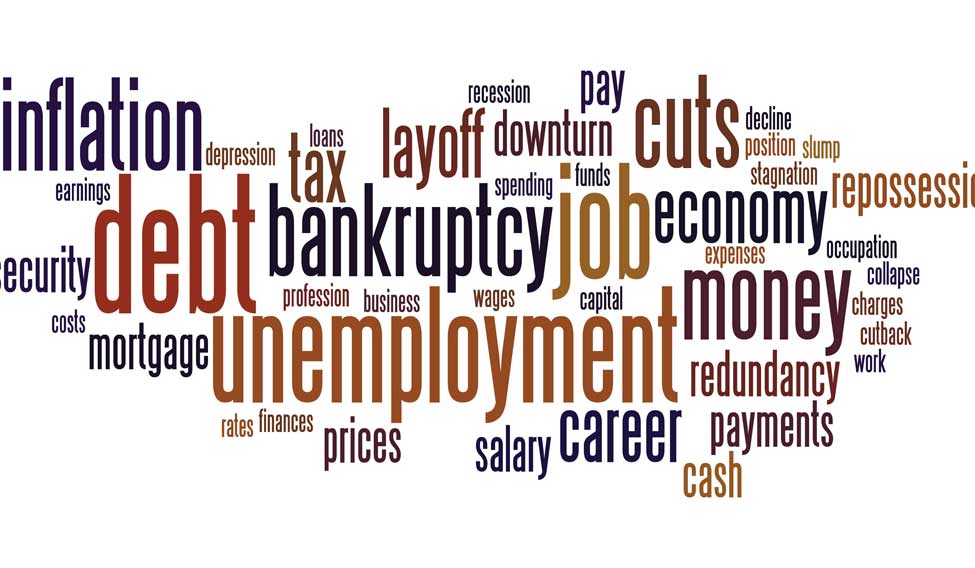Prime Minister Narendra Modi was hardly tired of saying all through 2016 that India would overtake China. After steadfastly holding on to their belief that all is well with the Indian economy, even after GDP dropped to 5.7 per cent for the first quarter ending in June, Finance Minister Arun Jaitley only this week conceded that all was indeed not well, and that the government would step in with a stimulus package.
The very mention of the word 'stimulus' takes India back to the way we rode out of the global economic meltdown of 2008, on a stimulus package. The situation now is not akin to when India too took a hit and the capital markets crashed in a day, due to the global meltdown. But the despondency is not different now. While the situation then could be traced to the butterfly effect of something that happened in far away America, but this time the world around is not performing badly.
The government here, however, chose to blindfold itself and denied anything was wrong. India continues to be a sweet spot, said Chief Economic Adviser, Arvind Subramaniam. That was almost a year ago. There is no unemployment only underemployment, said Arvind Panagariya recently, who was the Vice-chairman of Niti Aayog till August 2017.
Creating jobs and pressing the accelerator to high economic growth were two of the many rosy things that Modi and others in the BJP promised ahead of winning a majority on their own, and forming a government that is pretty much capable of doing whatever it decides.
But 40 months in office, the job scenario is frustrating, as much for job seekers as for the government, that has not been able to deliver. Growth figures have been tapering down with every quarter. All this at a time when the international crude price has dropped, as if in collusion with the government, that has refused to pass on any benefit of this to people.
While Prime Minister Modi has persuaded people to give up some subsidies, like on cooking gas and train fares, and pay more cesses (including a cow cess in Rajasthan and Punjab!), the RBI has in the last two years brought down interest rates through strict monetary policy and tried to keep inflation in check.
The demonetisation - which Modi claimed was aimed at wiping out black money, making India a modern less cash economy if not a cashless one - dealt a hard blow on every section of the economy. It took the purchasing power out of people's hands, leading to the initiation of a bunch of activities that are required to keep the wheels of economy chug along. How long will the effects of demonetisation last is anyone's guess.
Next came the mother of all financial reforms, the Goods and Services Tax (GST), which was rolled out with much fanfare in the Central Hall of the Parliament with a twist to the “Tryst with Destiny” speech, that marked India's freedom when it was being delivered. Finance Minister Arun Jaitley has said ad nauseam that GST will substantially bring down prices. But people are still looking out for things that cost less, like a needle in a haystack will be easier to find!
For the rest, the economy has become moribund-- the problem of “twin balance sheets” and NPAs continue to baffle policy makers and economists alike. If for a moment, exports look like they are not exactly falling free, the rupee becomes surprisingly strong that very moment, and neutralises whatever advantage the exporter may have got. Worse, delay in getting credits and refunds for GST has affected exporters.
Manufacturers don't want to borrow money, expand business or employ more people. And with a drop in capital expenditure by them, it escalates the downfall of industrial production, and consumption rates. And as the cycle is indeed vicious, when demand slows down, the capacity utilisation drops, and no capital expenditure leads to no credit offtake. This is the economic scenario which Jaitley conceded is true when he spoke of a stimulus package.
Sources in the government say that they are contemplating huge investments in large infra projects, where all these months it was waiting for private players to step in. For a start, they may consider accelerating the expenditure by ministries like the railways and roadways. The railway ministry has so far spent less than 20 per cent of the funds allocated to it in the budget for 2017-18. The road transport ministry may jump into finishing stalled projects and all the public sector projects may also be taken up, if possible under the PPP model.
Incentives to exporters, and small and medium scale enterprises by way of tax holidays and bonus. Stepping up government spending without sticking too rigidly to the fiscal deficit target, generally aimed at stimulating rural economy and reviving rural demand, is another option the Finance Minister may exercise as he zeroes in on a stimulus package.
Any gigantic government spending now, will necessarily mean that it will give a go-by to its fiscal deficit target. According to government figures, it has spent almost 93 per cent of its allocations. So will abandoning the fiscal deficit be wise? Some experts say Jaitley will have to choose between a sinking economy and holding on to the fiscal deficit target (over spending).
Many experts have favoured a reduction in petrol prices as one way to leave money to spend, in the hands of people. But given the need to capitalise banks and stimulate rural demand by improving infrastructure in the countryside, Jaitley is not likely to do that.
So far the Modi government has been on a political expansionist mode, focused almost absolutely on winning elections in state after state. Prime Minister Modi exercising his gift of the gab will not be enough now. PM and his finance minister have to come up with ideas that will work in the real world. The stimulus, whatever form it takes, has to actually work like an antibiotic, showing quick results.






